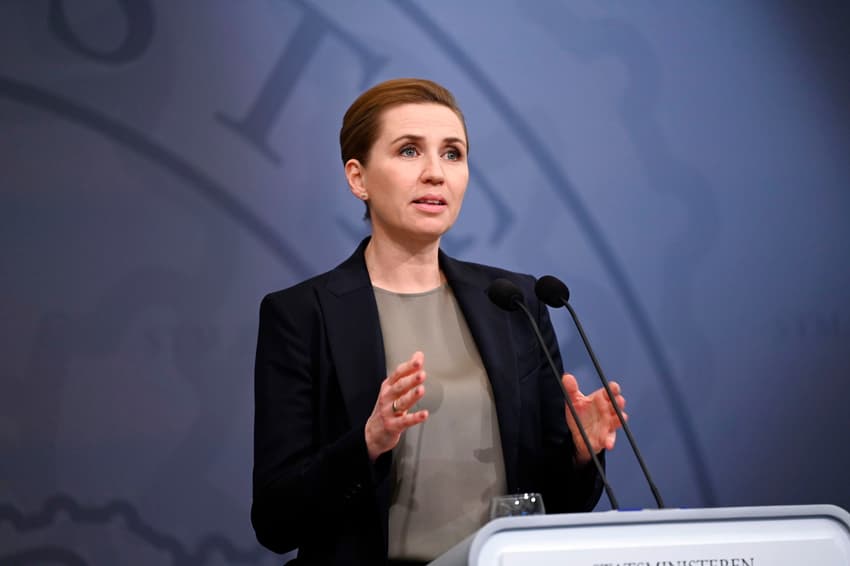Denmark extends lockdown by two weeks

Denmark's prime minister Mette Frederiksen on Tuesday evening announced that Denmark would deepen its current lockdown and extend it by two weeks.
The restrictions currently in place, which were due to end on January 3rd, will be extended to January 17th.
They will also be extended, with pupils in the first four classes of primary school, who were sent home from school early on December 21st, now returned to distance learning for the first time since the spring.
The decision came as the number hospitalised for coronavirus in the country hit a record 900, after doubling in two weeks.
"Let me say this very clearly," Frederiksen said. "The situation with infections and hospitalisations is more serious now than it was in the spring."
With the reproduction number now at 1.2, the risk was, she said, that Denmark could get on the so-called 'red curve', when the health service becomes overwhelmed.
"The 'red curve', which you might remember, can become the reality in the future, if we do not smash down the infection."
READ ALSO:
-
Denmark announces national Covid-19 lockdown from Christmas Day
-
Denmark extends coronavirus lockdown to entire country
-
Denmark announces support package for lockdown-hit restaurants
All shops and shopping centres apart from pharmacies and supermarkets will be closed. Everyone apart from essential workers who have to must work from home.
No new restrictions will be brought in for New Year's Eve, but Frederiksen called on Danish residents to limit their celebrations.
"In our eyes, it makes no sense for the New Year celebrations to mean that even more infection is spread," she said, calling on people to consider cancelling events they have organised. "We don't need to mess everything else up just for one night."
Søren Brostrøm, director of the Danish Health Authority, called on people to cancel any New Year's Eve events planned with anyone they did not see normally, "and consider going home early and early to bed," he added.
Denmark's national police chief, Thorkild Fogde, said that police would be out in large numbers on New Year's Eve to enforce the ban on gatherings of more than ten people.
"We will enforce the gathering ban, and people should follow the police's advice, otherwise there will be fines," he warned.
Comments
See Also
The restrictions currently in place, which were due to end on January 3rd, will be extended to January 17th.
They will also be extended, with pupils in the first four classes of primary school, who were sent home from school early on December 21st, now returned to distance learning for the first time since the spring.
The decision came as the number hospitalised for coronavirus in the country hit a record 900, after doubling in two weeks.
"Let me say this very clearly," Frederiksen said. "The situation with infections and hospitalisations is more serious now than it was in the spring."
With the reproduction number now at 1.2, the risk was, she said, that Denmark could get on the so-called 'red curve', when the health service becomes overwhelmed.
"The 'red curve', which you might remember, can become the reality in the future, if we do not smash down the infection."
READ ALSO:
- Denmark announces national Covid-19 lockdown from Christmas Day
- Denmark extends coronavirus lockdown to entire country
- Denmark announces support package for lockdown-hit restaurants
All shops and shopping centres apart from pharmacies and supermarkets will be closed. Everyone apart from essential workers who have to must work from home.
No new restrictions will be brought in for New Year's Eve, but Frederiksen called on Danish residents to limit their celebrations.
"In our eyes, it makes no sense for the New Year celebrations to mean that even more infection is spread," she said, calling on people to consider cancelling events they have organised. "We don't need to mess everything else up just for one night."
Søren Brostrøm, director of the Danish Health Authority, called on people to cancel any New Year's Eve events planned with anyone they did not see normally, "and consider going home early and early to bed," he added.
Join the conversation in our comments section below. Share your own views and experience and if you have a question or suggestion for our journalists then email us at [email protected].
Please keep comments civil, constructive and on topic – and make sure to read our terms of use before getting involved.
Please log in here to leave a comment.